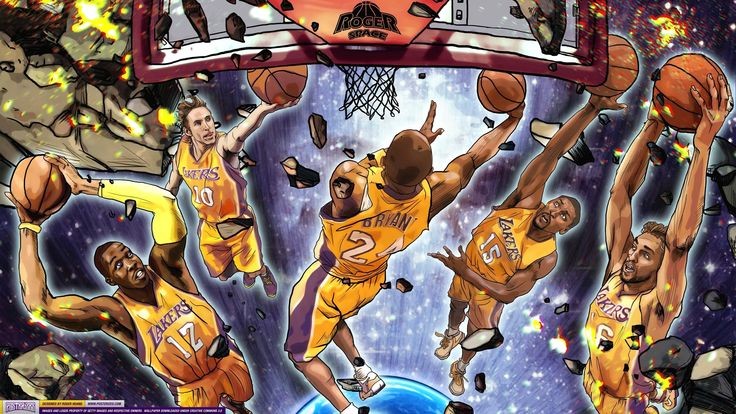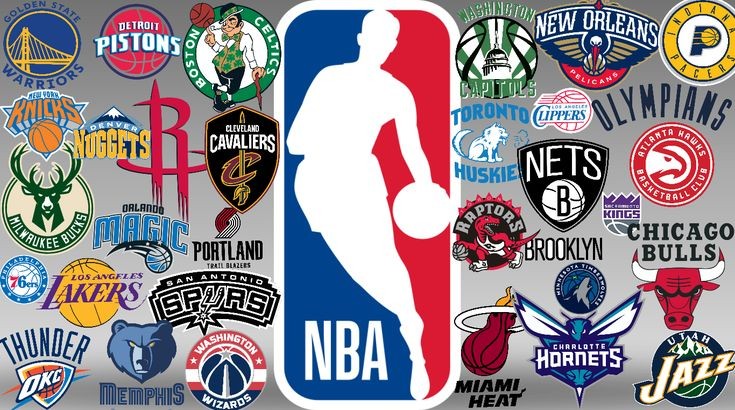From Peach Baskets to Global Phenomenon: A Journey Through NBA History

The National Basketball Association (NBA), with its electrifying dunks, strategic plays, and iconic rivalries, has captivated audiences for over seven decades. But the road to becoming the premier basketball league in the world wasn’t a slam dunk. It’s a story filled with mergers, rivalries, cultural shifts, and the rise of legendary players who transcended the sport. So, grab your courtside seats, and let’s delve into the rich history of the NBA:
Early Days: From BAA to NBA (1946-1949)
The NBA’s roots lie in the Basketball Association of America (BAA), founded in 1946 with 11 teams, mainly concentrated in the Northeast. Its biggest competitor was the National Basketball League (NBL), established in 1937. Both leagues battled for players and fans, leading to financial strain. Recognizing the need for consolidation, they merged in 1949, forming the National Basketball Association, a name that resonated with a broader national audience.
The 50s: The George Mikan Era and Racial Integration
The 1950s were dominated by the towering figure of George Mikan, a Minneapolis Lakers center who led the team to five championships. His size and skill revolutionized the game, forcing rule changes to limit his dominance. This decade also saw the first African American players enter the league, including legends like Chuck Cooper, Nat “Sweetwater” Clifton, and Earl Lloyd, paving the way for future generations.
The 60s: Wilt Chamberlain, Bill Russell, and the Boston Celtics Dynasty
The 1960s witnessed two iconic centers battling for supremacy: Wilt Chamberlain, a scoring machine, and Bill Russell, a defensive powerhouse. Chamberlain shattered scoring records, but Russell’s Boston Celtics, with their stifling defense and 11 championships in 13 years, cemented their dynasty. This era also saw the rise of the charismatic Oscar Robertson, the league’s first triple-double average leader.
The 70s: Kareem Abdul-Jabbar, Julius Erving, and the ABA Merger
The 1970s brought new stars like Kareem Abdul-Jabbar, the unstoppable skyhook specialist, and Julius “Dr. J” Erving, the pioneer of above-the-rim acrobatics, who joined the NBA through the merger with the rival American Basketball Association (ABA) in 1976. This merger injected a dose of excitement and innovation, adding the iconic three-point line and slam dunk contest.
The 80s: Magic vs. Bird and the Rise of Television
The 1980s were defined by the epic rivalry between Magic Johnson’s Los Angeles Lakers and Larry Bird’s Boston Celtics. Their contrasting styles and captivating personalities fueled a surge in popularity, aided by the emergence of cable television. This era also saw the arrival of Michael Jordan, who quickly captivated audiences with his electrifying dunks and competitive spirit.
The 90s: The Jordan Era and Global Expansion
Michael Jordan’s Chicago Bulls dominated the 1990s, winning six championships in two three-peats. Jordan’s global appeal transcended basketball, making him a cultural icon and propelling the NBA onto the international stage. The league expanded globally, opening offices in Europe and Asia and participating in the first Dream Team at the 1992 Olympics.
The 2000s: The Post-Jordan Era and International Influence
The 2000s saw the rise of new superstars like Kobe Bryant, Shaquille O’Neal, and Tim Duncan, who led their teams to multiple championships. The international influence continued to grow with players like Dirk Nowitzki and Yao Ming becoming global stars. The league grappled with challenges like gambling scandals and labor disputes but remained a significant cultural force.
The 2010s: Golden State Warriors Dynasty and Rise of Social Media
The 2010s witnessed the dominance of the Golden State Warriors, led by Stephen Curry and Klay Thompson, who revolutionized the game with their long-range shooting prowess. The rise of social media further amplified players’ voices and personalities, connecting them directly with fans worldwide.
The 2020s: A New Era Dawns
The 2020s hold new challenges and opportunities. The league navigated a global pandemic, addressed social justice issues, and continues to explore technological advancements. Young stars like Giannis Antetokounmpo, Luka Doncic, and Ja Morant are shaping the future of the game, keeping the NBA dynamic and ever-evolving.
Conclusion:
The NBA’s journey is a testament to its ability to adapt and evolve. From humble beginnings



